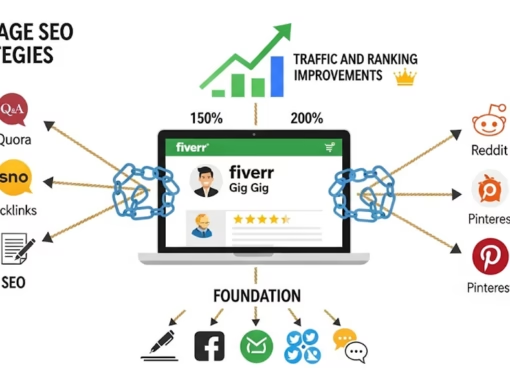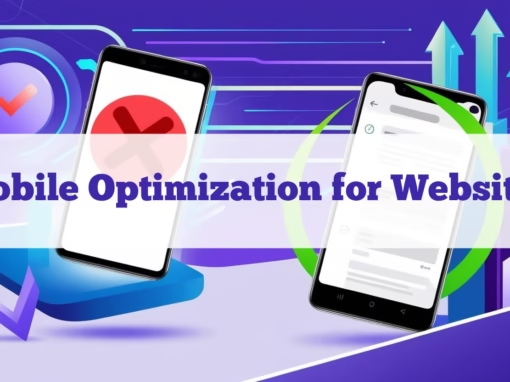Here are the essential things you need to consider: for a business website Development that ranks well on Google requires a solid SEO checklist. In this guide, we’ll walk you through 30 essential steps to optimize your site for search engines, from keyword research to mobile-friendly design.
1. Clear Business Goals and Objectives
- Define the purpose of your website (e.g., selling products, generating leads, providing information).
- Identify your target audience and their needs.
2. Domain Name
- Choose a memorable, relevant, and easy-to-spell domain name.
- Ensure it reflects your brand and is available for registration.
3. Web Hosting
- Select a reliable web hosting provider that offers good uptime, speed, and customer support.
- Consider scalability as your business grows.
4. Website Platform (CMS)
- Choose a Content Management System (CMS) like WordPress, Shopify, Wix, or Squarespace, depending on your needs.
- Ensure the platform is user-friendly and supports your business requirements.
5. Design and Layout
- Create a clean, professional, and responsive design that works well on all devices (desktop, tablet, mobile).
- Use a consistent color scheme, typography, and branding elements.
6. Content
- Develop high-quality, engaging, and relevant content (text, images, videos).
- Include essential pages like Home, About Us, Services/Products, Blog, and Contact Us.
- Optimize content for SEO to improve search engine rankings.
7. E-Commerce Functionality (if applicable)
- Integrate a secure payment gateway (e.g., PayPal, Stripe).
- Set up product pages, shopping cart, and checkout process.
- Ensure compliance with data protection regulations (e.g., GDPR, PCI DSS).
8. SEO and Analytics for a Business Website
- Implement basic SEO practices (meta tags, alt text, keyword optimization).
- Set up Google Analytics to track website performance and user behavior.
9. Security
- Install an SSL certificate to secure data transmission (HTTPS).
- Regularly update your CMS, plugins, and themes to protect against vulnerabilities.
- Implement backup solutions to prevent data loss.
10. Contact Information and Forms
- Provide clear contact details (phone, email, address).
- Include contact forms for inquiries and feedback.
11. Social Media Integration
- Add links to your social media profiles.
- Enable social sharing buttons for your content.
12. Legal Compliance for Business Websites
- Include a Privacy Policy, Terms of Service, and Cookie Policy.
- Ensure compliance with local and international regulations (e.g., GDPR, CCPA).
13. Testing and Optimization
- Test your website for functionality, speed, and compatibility across different browsers and devices.
- Optimize for fast loading times and a smooth user experience.
14. Marketing and Promotion
- Plan for digital marketing strategies (SEO, PPC, email marketing, social media marketing).
- Consider integrating email signup forms for newsletters.
15. Maintenance Plan
- Schedule regular updates, backups, and security checks.
- Monitor website performance and make improvements as needed.
16. User Experience (UX) and Accessibility
- Ensure your website is easy to navigate with a clear menu structure.
- Make your website accessible to all users, including those with disabilities, by following WCAG (Web Content Accessibility Guidelines).
- Use intuitive design elements and avoid clutter.
17. Mobile Optimization
- Ensure your website is fully responsive and provides a seamless experience on mobile devices.
- Test your website on various screen sizes and resolutions.
18. Content Management and Updates
- Plan for regular content updates to keep your website fresh and relevant.
- Consider a blog or news section to share industry insights, company updates, and valuable content.
19. Customer Support and Chat
- Integrate live chat or chatbot functionality to provide instant support to visitors.
- Include a comprehensive FAQ section to address common queries.
20. Multilingual Support (if applicable)
- If your business serves a global audience, consider offering your website in multiple languages.
- Use translation plugins or services to ensure accuracy and consistency.
21. Website SEO best practices for a business website development
- Conduct keyword research to identify high-value keywords for your industry.
- Implement advanced SEO techniques like schema markup, internal linking, and backlink building.
- Regularly update your content to keep it relevant and optimized.
22. Performance Optimization
- Use tools like Google PageSpeed Insights to identify and fix performance issues.
- Optimize images and use lazy loading to improve page load times.
- Consider using a Content Delivery Network (CDN) to enhance speed and reliability.
23. Customer Reviews and Testimonials
- Showcase customer reviews and testimonials to build trust and credibility.
- Integrate review platforms like Google Reviews or Yelp.
24. Analytics and Reporting
- Set up goals and conversion tracking in Google Analytics.
- Use heatmaps and user session recordings to understand user behavior.
- Regularly review analytics data to make informed decisions.
25. Integration with Third-Party Tools
- Integrate with CRM systems (e.g., Salesforce, HubSpot) to manage customer relationships.
- Use email marketing tools (e.g., Mailchimp, Constant Contact) to automate campaigns.
- Connect with accounting software (e.g., QuickBooks, Xero) for seamless financial management.
26. A/B Testing
- Conduct A/B testing to determine the most effective design, content, and call-to-action (CTA) elements.
- Use tools like Google Optimize or Optimizely for testing and optimization.
27. Scalability
- Ensure your website can handle increased traffic and transactions as your business grows.
- Choose scalable hosting solutions and plan for future feature additions.
28. Community and Engagement
- Create a community forum or user group to engage with your audience.
- Encourage user-generated content and interactions.
29. Branding and Storytelling for a Business Website Development
- Clearly communicate your brand story and values.
- Use consistent branding across all pages and elements.
30. Feedback Mechanism
- Implement feedback forms or surveys to gather user opinions and suggestions.
- Use feedback to continuously improve your website and services.
By incorporating these additional elements, you can create a more robust, user-friendly, and effective business website that not only meets but exceeds the expectations of your visitors and customers.









0 Comments